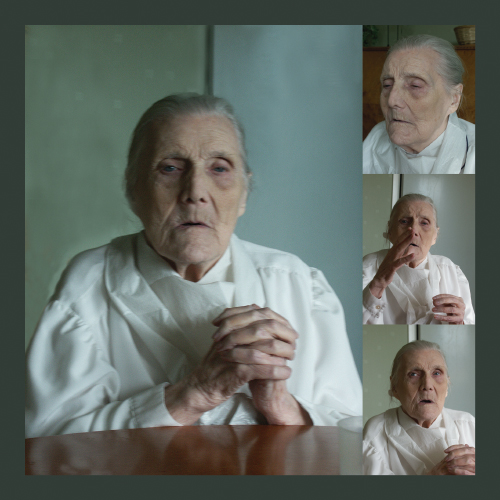PORTRAIT GALLERY AS A PROCESS
AND AS AWARENESS SUPPORT
was financed by a project grant from the Swedish
Arts Grants Committee (Konstnärsnämnden) www.konstnarsnamnden.se
and by the project Skiss run by the organization Konstfrämjandet
www.skiss.se. The object
of the project was to examine to what degree a process-based photographing
of senile elderly could improve their self-awareness and capacity for
presence. The project’s main hypothesis is that we are all interested
in ourselves, even those who suffer from senile dementia. Having continually
seen freshly taken pictures of themselves on a computer screen, the senile
individuals’ self-awareness improved and they were enticed to participate
actively in the photo process. Their brains were stimulated and they grew
while participating, often with results that amazed me. For example John
who appeared to lack language entirely and only produced formless sounds.
When he saw a finished portrait of himself he suddenly said in a clear
voice: “Why this is me! And it’s quite good! What does it
cost?”
(Clic in the picture to view several portraits.)

Senile individuals cannot be creative on their own, but they can take part in creative processes that interest them. Thus I have continued to work with the portraits and turn them into paintings before their eyes. This was a way of bringing greater esteem to the senile elderly.
I have wrestled for a long time with the problem of how to present the project for others without exposing the participants. I find it impossible to show the initial portraits for reasons of confidentiality. However, only showing the final portraits where the senile individuals are fully present, does not convey the essence of the project, but rather stops short at “nice pictures of old people”. The solution I found was a group of four images where the final portrait, flanked by small process images, is dominant.
(Clic in the picture to view several portraits.)

Senile individuals cannot be creative on their own, but they can take part in creative processes that interest them. Thus I have continued to work with the portraits and turn them into paintings before their eyes. This was a way of bringing greater esteem to the senile elderly.
I have wrestled for a long time with the problem of how to present the project for others without exposing the participants. I find it impossible to show the initial portraits for reasons of confidentiality. However, only showing the final portraits where the senile individuals are fully present, does not convey the essence of the project, but rather stops short at “nice pictures of old people”. The solution I found was a group of four images where the final portrait, flanked by small process images, is dominant.